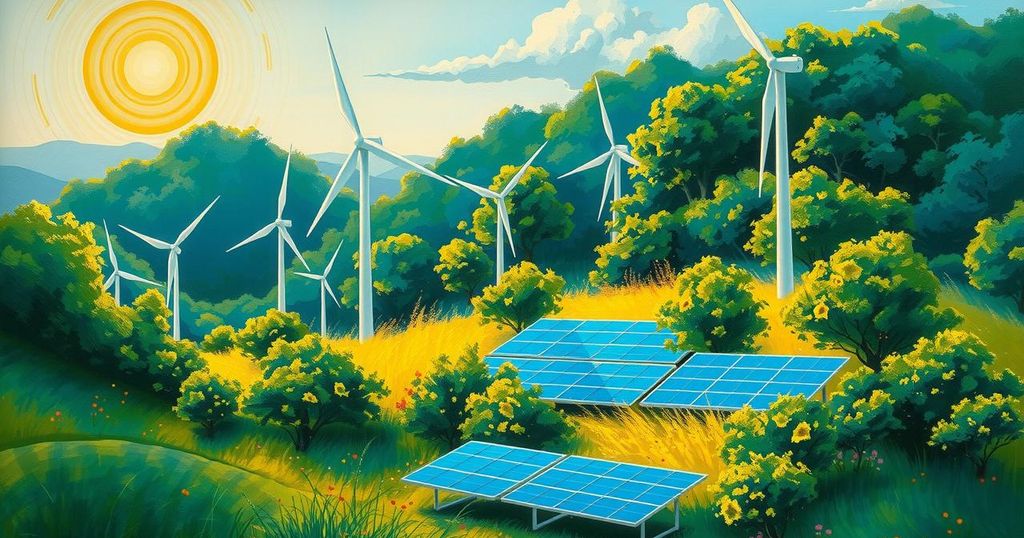China’s Carbon Emissions Target Missed, Complicating Global Climate Goals

China has missed its 2024 carbon intensity target, reducing only 3.4%, against a goal of 3.9%. As the world’s top emitter, its ability to achieve carbon neutrality by 2060 is crucial for global climate efforts. Despite renewable energy advancements, challenges such as increased energy demand and emissions growth persist, exacerbated by climate impacts. Upcoming carbon targets are expected to shape future policy direction.
China’s recent failure to meet its carbon emissions target has illuminated significant challenges in its journey toward carbon neutrality, an essential aspect for global climate stability. The National Bureau of Statistics reported a reduction in carbon intensity of only 3.4% for 2024, falling short of the envisaged 3.9%. This missed target raises questions about China’s capacity to control carbon emissions effectively, especially being the world’s largest contributor, accounting for approximately 30% of global emissions.
The Chinese Communist Party (CCP) has set ambitious goals, aiming for an 18% reduction in carbon intensity from 2020 to 2025, while President Xi Jinping has committed to reaching peak emissions by the end of this decade and achieving carbon neutrality by 2060. However, despite initiatives in renewable energy, China appears to be lagging in fulfilling these critical emissions targets, which may jeopardize international efforts to maintain global temperature rise within the 1.5-degree Celsius threshold established by the United Nations.
Concerns have amplified in light of record-high temperatures observed in 2024, marking the first year that global temperatures have surpassed this critical limit. Despite economic growth of 5%, electricity demand surged by 6.8%, with carbon emissions increasing by 0.8%, further complicating China’s decarbonization efforts. Muyi Yang, a senior energy analyst observed that although the economy continued to expand, the reduction in carbon emissions relative to economic growth was not as pronounced as anticipated.
Moreover, recent extreme weather patterns have negatively impacted energy production, particularly hydropower, necessitating a reliance on coal to compensate for energy deficits. Nonetheless, noteworthy achievements have been made in renewable energy; China satisfies approximately 14.5% of its total energy demand using wind and solar sources and 13.4% from hydropower, as indicated by Eric Fishman of the Lantau Group.
Government backing has significantly propelled this progress, reflected in Xi Jinping’s drive towards establishing an “ecological civilization.” This year, the nation embarked on a major carbon trading initiative, the world’s largest of its kind. Analysts argue that China’s shift from traditional manufacturing toward greener production, focusing on innovations such as solar panels and electric vehicles, is vital.
The upcoming release of the new carbon emissions targets from the CCP for 2026 to 2030 is poised to shape the strategic direction for both public and private sectors in China’s energy landscape. While experts express optimism regarding achieving peak carbon before 2030, Yao Zhe from Greenpeace East Asia emphasizes that systemic changes within China’s energy framework are urgently needed to ensure long-term sustainability.
China’s struggle to meet its emissions targets poses substantial challenges for both its domestic policy and global climate goals. While progress has been made in renewable energy, the increase in carbon emissions underscored by economic growth and recent climate extremes highlights the difficulties ahead. Upcoming carbon targets will be pivotal in directing future efforts towards achieving true decarbonization and carbon neutrality by 2060, balancing economic ambitions with environmental stewardship.
Original Source: www.aljazeera.com






